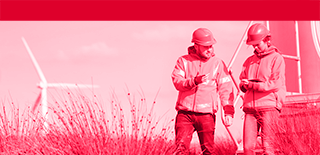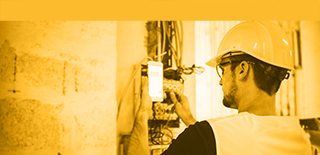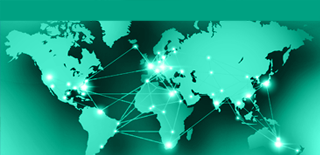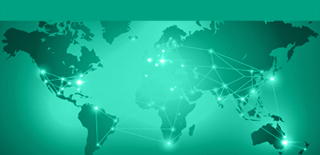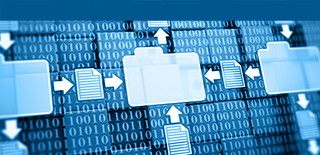Utilities
Up-to-date information about the utilisation of energy and water infrastructure can be used to cut waste and improve efficiency. The information collected by connected energy and water meters, for example, can help consumers and businesses to reduce usage, while helping utilities to better balance supply and demand, and identify leaks and faults.
Although energy meters are generally connected to the grid, smart water meters tend to be battery-operated, so they need to be power efficient. Moreover, in many countries, water meters are located outside of homes and/or underground, so they cannot use a home’s Wi-Fi network for backhaul connectivity.
New low power wide area (LPWA) connectivity provides a less expensive and less complex means of connecting water meters than earlier technologies. By extending the battery life of meters, LPWA can enable a utility to increase the time between servicing. Lengthening the service cycle from 2-3 years to 10-15 years would dramatically improve the utility’s return on investment. As smart water meters tend to communicate comparatively small (100s of bytes, at maximum) payloads of metering data, power-efficient, low bandwidth network technologies are particularly well-suited this application.
Employing 3GPP-based LPWA technologies will enable an operator to connect meters using its existing cellular infrastructure, as well as taking advantage of cost-effective standardised device hardware. The 3GPP technologies are also designed to support two-way communications, which are required to support time synchronization and firmware updates for digital water meters.
In Spain, Vodafone and Aqua de Valencia are piloting the use of NB-IoT to connect water meters. The utility chose 70 meters in difficult-to-reach locations, including underground sites, and Vodafone has connected them to a trial NB-IoT network. Vodafone says NB-IoT has been able to deliver a wireless signal to all 70 locations, some of which are beyond the reach of the existing GSM network. The pilot has confirmed Aqua de Valencia’s view that NB-IoT will significantly increase the efficiency of meter readings and could potentially be used to enable additional services.
In Chile, Telefónica is working with the leading water utility company to remotely read meters, providing staff efficiencies by not having to send someone out to manually check the meters. Telefónica has upgraded its base station to support the NB-IoT for the pilot using the 850MHz frequency band.
China Telecom is piloting NB-IoT to enable smart water and gas metering on a pre-commercial network in Shenzhen, Guangdong province. The operator is using NB-IoT in 800MHz spectrum to collect data from 140 water meters and 50 gas meters in partnership with Shenzhen Water Group and Shenzhen Gas respectively. The pilots are designed to verify an end-to-end NB-IoT solution, including the terminals, base stations, core network, IoT platform and service application. The operator plans to increase the number of connected water metres to 1,300 by the end of February 2017 with the service being launched commercially at the end of June.
China Mobile has teamed up with ZTE to use NB-IoT connectivity to enable the remote monitoring of water quality. In this case, the low power wide area technology is used to regularly transmit data on water quality to a public agency. For smart lighting, China Mobile is working with Huawei and Insigma Group to enable the brightness of street lamps to be remotely controlled via an NB-IoT module in the power controller.
Mobile operator NOS and utility company EDP Distribuição (EDPD) are piloting NB-IoT to support smart energy grid applications in Portugal. 100 smart meters, some of which are positioned deep within buildings, have been connected to two base stations in the Parque das Nações district of Lisbon. Similarly in Denmark, TDC Group is piloting smart water and heat meters using a NB-Io-enabled base station to give utilities and their customer’s better visibility of consumption and improve efficiencies.
Mobile operator Deutsche Telekom is also piloting the use of NB-IoT for smart metering and smart lighting in several locations in The Netherlands, including Amsterdam, Rotterdam, The Hague and Eindhoven. DT has found customers value the additional security afforded by using SIM cards to authenticate devices on a cellular network operating in licensed spectrum.
Danish mobile operator, TDC, is working with smart meter supplier Kamstrup to enable water and heat pilots. TDC connected meters will give utilities and their customers better visibility of the amount of water and heat being consumed, enabling them to become more efficient.
In the US, AT&T is is working with Capstone Metering to trial smart water meters with LTE-M technology. AT&T is expecting LTE-M to offer significantly extended battery life, smaller modules, and improved coverage, particularly in buildings and in subterranean locations, than conventional cellular technologies. Some of the smart meters involved in the pilot are below ground and deep in basements.
